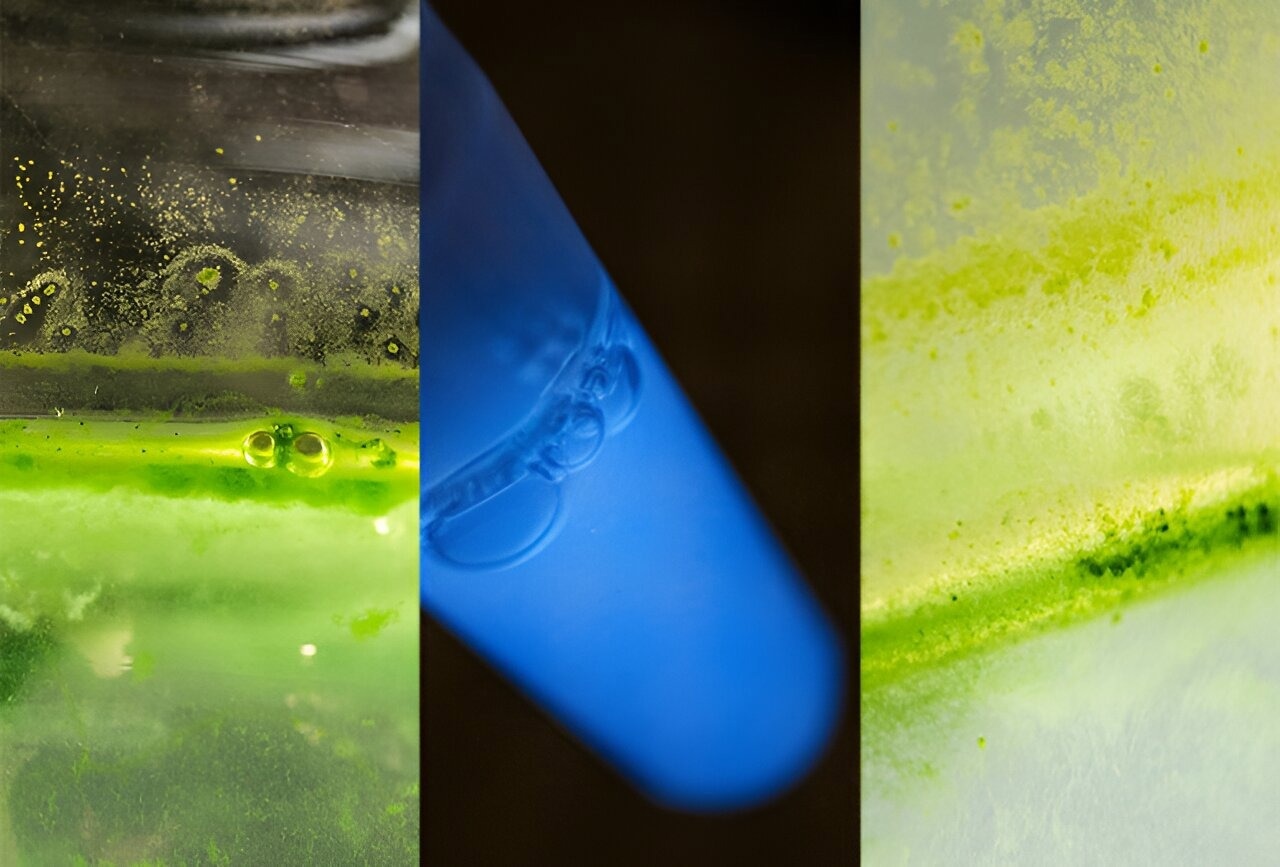Reviewed by Lexie CornerSep 5 2024
Bioengineers at Rice University have developed a road map detailing how specific proteins interact to form the nanometer-thin shell of air-filled bubbles used by microorganisms for flotation. These bubbles help the organisms rise to the water's surface, where they can compete for light. The research, which explores the formation and function of these protein-based flotation devices, offers insights into the mechanisms of microbial buoyancy. The study's findings were published in The EMBO Journal.
 The tiny air-filled bubbles some photosynthetic microorganisms use as flotation devices could be engineered into powerful biomedical applications. Rice University bioengineers created a road map of the protein-protein interactions that give rise to the formation of these gas vesicles in microorganisms. Part of the process involved using bioluminescence as a tool for gauging protein-protein interactions. Image Credit: Jeff Fitlow/Rice University.
The tiny air-filled bubbles some photosynthetic microorganisms use as flotation devices could be engineered into powerful biomedical applications. Rice University bioengineers created a road map of the protein-protein interactions that give rise to the formation of these gas vesicles in microorganisms. Part of the process involved using bioluminescence as a tool for gauging protein-protein interactions. Image Credit: Jeff Fitlow/Rice University.
The micrometer-sized bubbles are called gas vesicles (GVs), and they have many potential uses in biomedicine, such as sensing, imaging, tracking, and cellular manipulation. However, scientists have not yet discovered how to produce medically useful GV varieties in a laboratory.
Rice bioengineer George Lu and his colleagues in the Laboratory for Synthetic Macromolecular Assemblies have made significant progress toward developing potent new diagnostics and therapeutics based on these naturally occurring structures by unraveling some of the intricate molecular processes involved in GV assembly.
GVs are essentially tiny bubbles of air, so they can be used together with ultrasound to make things inside our bodies visible, such as cancer or specific parts of the body. However, GVs cannot be made in a test tube or on an assembly line, and we cannot manufacture them from scratch.
Manuel Iburg, Postdoctoral Researcher and Study Lead Author, Rice University
Some of the smallest bubbles ever created belong to the GV family, and they have a lifespan that can last for months. Their ability to retain gas, even underwater, is attributed to the unique structure of their protein shell. This shell is permeable to water and gas molecules, yet its highly water-repellent inner surface prevents water from filling the vesicle. Unlike synthetic nanobubbles, which draw gas from external sources, GVs absorb gas directly from the surrounding liquid.
The genes responsible for producing the proteins that form this unique shell are found in photosynthetic bacteria that dwell in water. These bacteria use GVs to float closer to sunlight. Despite knowing what the bubbles look like and understanding why they tend to cluster, scientists still lack knowledge about how the proteins involved in GV assembly interact. Without insights into how these protein building blocks function, efforts to deploy lab-engineered GVs in medical applications remain on hold.
To solve the issue, the scientists narrowed their focus to a set of 11 proteins they were certain were involved in the assembly process and devised a technique to monitor how they interact with the others inside the living parent cells.
We had to be extremely thorough and constantly check whether our cells were still making GVs. One of the things we learned is that some of the GV proteins can be modified without too much trouble.
Manuel Iburg, Postdoctoral Researcher and Study Lead Author, Rice University
As the researchers conducted their tests, they used their findings to selectively add or remove specific GV proteins. This approach helped them identify that certain protein interactions could only unfold correctly with the assistance of other proteins. Moreover, they investigated how these interactions changed throughout the GV assembly process.
Iburg said, “Through many such permutations and iterations, we created a road map showing how all these different proteins have to interact to produce a GV inside the cell. We learned from our experiments that this road map of GV interactions is very dense with many interdependent elements. Some of the GV proteins form subnetworks that seem to perform a smaller function in the overall process, some need to interact with many of the other parts of the assembling system, and some change their interactions over time.”
We think GVs have great potential to be used for new, fast, and comfortable ultrasound-based diagnoses or even treatment options for patients. Our findings can also help researchers develop GVs that enable existing treatments to become even more precise, convenient, and effective.
George Lu, Assistant Professor, Bioengineering, Rice University
Lu is also a Scholar at the Cancer Prevention and Research Institute of Texas (CPRIT).
Journal Reference:
Iburg, M., et al. (2024) Elucidating the assembly of gas vesicles by systematic protein-protein interaction analysis. The EMBO Journal. doi.org/10.1038/s44318-024-00178-2